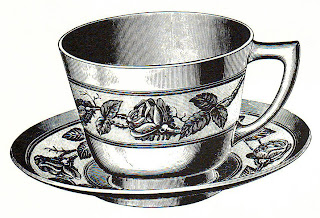Today, June 11th … Today is a public holiday in most of Australia. It is the Queen’s official birthday, hence, as a relic of our colonial past and in recognition of Her as Head of the Commonwealth, we get a Monday off work. It is the one day a year I am a minor Royalist, in gratitude for the holiday.
For those of you who must drag yourselves reluctantly to work this Monday morning, pause a moment and think yourself back to 1911, when June 11th was a Sunday. On this retrospecive Sunday morning imagine yourself aboard the magnificent R.M.S. Lusitania and blissfully unaware of its fate in 1915 at the hands of a German U-Boat. Your imagination can only manage Second Class, but the breakfast choices are still pretty good.
Apples
Oatmeal Porridge and Fresh Milk
Broiled Codfish Steaks Aberdeen Haddock
Boiled Eggs to Order
--
Broiled Cumberland Ham Fried Eggs
Grilled Beef Steak Saute Potatoes
Rice Cakes, Golden Syrup
--
COLD
Corned Beef
--
Watercress
White & Graham Rolls Soda Scones
Vienna Bread
--
Marmalade Jam
--
Tea Coffee Cocoa
Ham and eggs sound a good breakfast choice, but my history choice today is the Soda scones, for there is in soda scones the complete history of grain-based cuisine.
On the sad off-chance that there may be some of you who don’t know what a scone is, it is the little treat defined by the OED as “ … generally, a soft cake of barley- or oatmeal, or wheat-flour, baked in single portions on a griddle or in an oven. Also with defining words, denoting varieties of this cake, as butter, potato, soda, treacle scone; brown scone, one made of whole meal; drop-, dropped scone, one made of a small portion of batter dropped on the griddle or on a tin and baked.”
If you grow grain, what can you do with it to make it more digestible and palatable? You can soften up the whole grains in water, boil them up, and make a sort of porridge called frumenty. You can first grind the grain to a varying degree from very coarse to very fine. You can then get creative with this idea of grain mixed with water. Your mixture can be varied, depending on which grain you use, how ‘wet’ you make it, and what else you add to enrich it. You can cook it on a flat hearthstone or metal griddle over your fire, or inside your oven, if you have one. From this grain and liquid you can end up with:
Pancakes, drop scones, or pikelets (Australia) or hoe-cakes (America) – with a wettish batter, cooked on a griddle.
Griddle (or girdle) scones – with a bit less liquid so you have a dough rather than a batter. Or a damper, if you are in Australia and make one large scone with your dough.
Bread – if you add yeast (or the air adds it for you).
Cakes and soda scones – if you add a rising agent such as baking powder.
Pastry - if you add fat, and handle lightly.
Baking powder leavening agents were developed in the mid-nineteenth century, so by definition, soda scones did not exist before then. A textbook of 1848 called “School chemistry: or, practical rudiments of the science” by Robert Dundas Thomson describes how this works “Soda scones are made by mixing bicarbonate of soda with the flour, and then baking the mass up with buttermilk; the acid of the milk displaces the CO2”
In yet another example of two countries with a common culinary heritage being divided by their common language, what is called a ‘scone’ in England and Australia, is a ‘biscuit’ in the United States. Technically, the word ‘biscuit’ means ‘twice cooked’ – so a crisp, hard thing - so we who use ‘scone’ for this soft cooked dough tend to feel linguistically correct and therefore superior on this point. Imagine my surprise then, when I took up that quintessentially English cookbook author, Isabella Beeton (1861), to give you her soda scone recipe, to find that she calls them Soda Biscuits!
A book of the same era - Cookery and domestic economy, by Somerville (1862) – recognises the difference (or is it the similarity?) and gives these two recipes:
American Biscuits.
Mix half a pound of sugar with one pound of flour, half a tea-spoonful baking powder, and rub in four ounces of butter; make into a dough with warm milk, roll out thin, cut them out, and bake immediately in a quick oven.
Soda Scones.
To every pound of flour give one half tea-spoonful of carbonate of soda, and the same of cream of tartar, make it into a dough with very sour butter-milk; knead quickly; make it up in small round balls, roll out pretty thin, prickle them with a fork, and bake immediately on a hot griddle or in the oven. A little butter rubbed amongst the flour may be added if wanted richer, and a few currants.
Tomorrow’s Story …
Life with Dates.
Quotation for the Day …
In nothing more is the English genius for domesticity more notably declared than in the institution of this festival - almost one may call it - of afternoon tea...The mere chink of cups and saucers tunes the mind to happy repose. George Gissing.
 Today, June 29th
Today, June 29th













